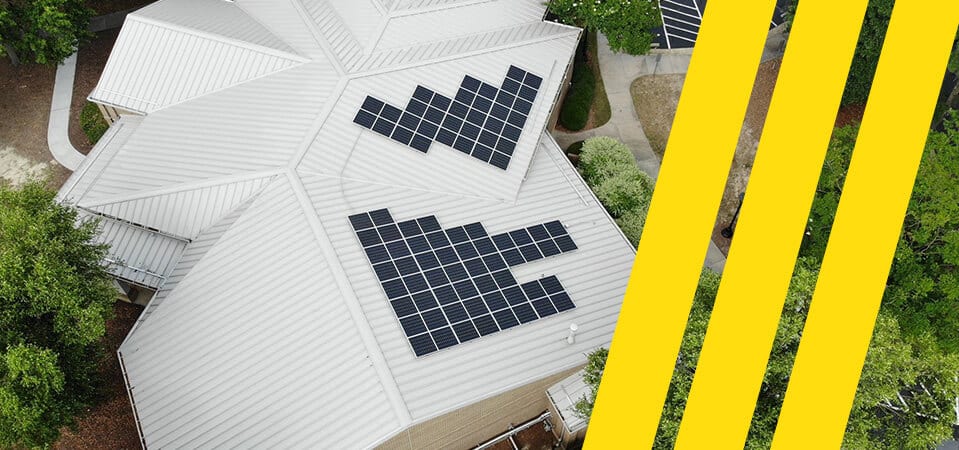
Solar panels create direct current (DC) electricity that must be transformed into alternating current (AC) electricity for use inside your home or business. Solar inverters help complete this process by converting DC electricity into AC electricity. However, more than one type of solar inverter is available to solar panel owners.
Innovations in inverter technology have steadily grown as solar panels become more popular, allowing homeowners and businesses to maximize the power they gain from their solar panel systems. String inverters and microinverters are two types of solar inverters. Continue reading to understand the benefits, drawbacks and distinctions of the two to determine which may work best for your home or business.
A string inverter is attached to a series circuit that typically connects to a string of individual solar panels, called a solar array. A string inverter consists of a standalone box usually installed by your solar provider around your electricity meter and primary service panel. String inverters systems typically only involve one or two inverters, but the number depends on the overall size of the solar panel system.
String inverters are typically used with solar panel systems that see full sun exposure. Remembering that string inverters convert solar energy using the lowest-performing panel is essential. Ensuring all your panels have similar output is critical to get the most from your solar panel system.
String inverters have many distinct benefits, including:
While string inverters have significant benefits, there are also some drawbacks to consider before deciding which inverter you prefer.
Microinverters work in a parallel circuit, where they maximize the electricity production passed on the lowest-performing panel. Microinverters are smaller than string inverters, typically around the size of an internet router, and are equipped to the back of each panel. Normally, you will have just as many microinverters as solar panels.

Microinverters make the most of each panel’s solar production, transforming as much power as possible and helping you get the most out of your solar panel system.
Microinverters have many benefits, including:
Microinverters have many benefits, and they are ideal for solar systems that face different orientations or are partially shaded. However, there are some drawbacks to consider before making a final decision.
Choosing between string vs. microinverters will depend on the constraints of your project. If you can install your solar panels so they have consistent, full sun, string inverters may be the best choice. However, if parts of your solar system will be shaded throughout the day, you are better off choosing microinverters.
You will also want to consider if you want to expand your solar panel system, as microinverters are easier to work with when adding solar panels. Your budget will likely also come into play, so you will need to weigh the benefits and disadvantages to determine what system you can afford and which would help you generate the most energy savings.
Your solar installer can also help you find the best solar inverter for your home or business. Your solar installer will have the best recommendations based on your solar panel orientation, budget and individual needs.
If you are unsure which solar inverter to pick, 8MSolar can help. We are leaders in North Carolina solar, utilizing our in-house team of solar professionals and engineers to help you maximize your solar installation. We have thousands of residential and commercial projects under our belt and have the knowledge and expertise to help you find premium solar solutions.
We also offer a 25- to 30-year warranty on our panels and a Lifetime Workmanship & Roof Penetrations warranty to give you peace of mind about your new solar installation. Contact us today to learn more about how we can help you find the right inverter and our various services.
This content was originally published here.
